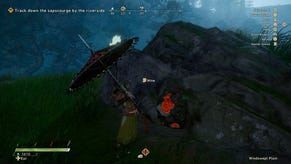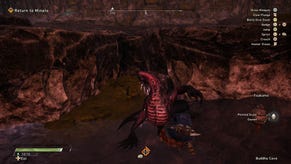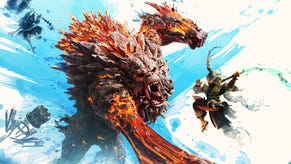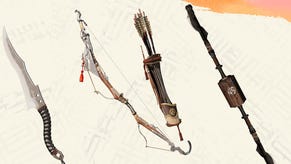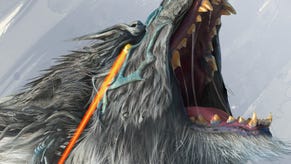Monster Hunter remains king, but there's one thing it could learn from Wild Hearts
Having trouble with late game monsters? A certain boss kicking your ass? Here’s how you can stop dying and embrace the joy of cooking.
I think Wild Hearts is a terribly unbalanced game. I think some of the monsters you fight are too bland, and I think some of them are far, far too spicy. I think the gameplay loop is fattier and chewier than it is in genre rival Monster Hunter, and I think the vast majority of fights have more gristle in them than is totally necessary. The game does an atrocious job of educating you about what exactly is hidden away in the recesses of the experience, and the armour/upgrade ecosystem feels carelessly crammed in – with no care or consideration for the end result – and demands too much of you for what it offers in return.
And yet, I can’t stop playing it. It feels like eating a sausage; the game is packed with more mechanical viscera than a butcher’s worst bin-end banger, but it’s somehow inexplicably moorish and delicious. You could compare Monster Hunter to some haute cuisine masterclass; an expensive but reliable plate that’s been refined and seasoned to perfection. A specialty from the executive chefs at House d’Capcom, the sort of thing you go back for once a year to see what new batshit ideas the studio has cooked up to add to the formula.
Koei Tecmo and Omega Force (who you may recognise from ‘comfort food’ series, Dynasty Warriors) have gone the other direction with Wild Hearts. All filler, no killer – the empty carbs of the video game world. The interactive entertainment equivalent of ‘filling up on bread’. It’s mindless, but filling – the sort of thing you can lose hours to completely by accident. Like binge-watching a series you don’t even particularly like, but keep on the TV ‘because it’s on’.
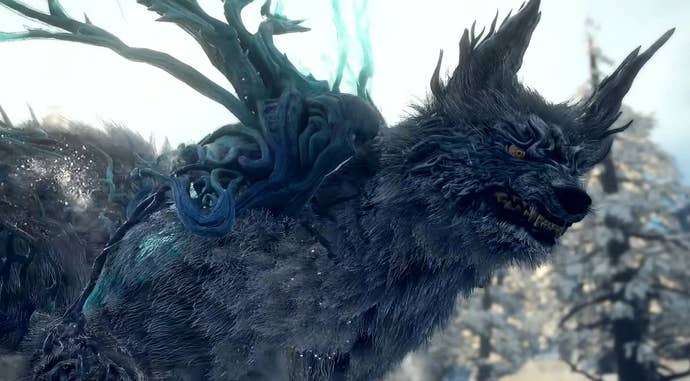
Arrhythmic gameplay loop and janky camera aside, there’s a lot to consider as you stuff your face full of Ritter Sport bars and gorge on the Wild Hearts experience. If you want decent, well-paced and fun fights, go back to Monster Hunter. It does everything Wild Hearts does, but better – save for one area that the EA Original experiment does better than Capcom. And that is, fittingly, the food.
You see, in Monster Hunter, you’re tasked with eating a meal of some kind before every hunt – in World, it’s a massive barbarian-style roast, and in Rise, it’s a couple sticks of dango (a Japanese dumpling made from rice flour mixed with uruchi rice flour and glutinous rice flour). Monster Hunter makes you pick your flavours, get your buffs, and scoff your meal before heading out – letting you enjoy a communal meal with mates before you go and skin some poor lizard so you can make a new hat.
Wild Hearts does it differently, and cedes control of the whole farm-to-plate pipeline directly to you. Whether you’re out picking unmilled rice in the field, or pickling eggplants in some specially-purchased sake vinegar for a big fight coming up, the food is entirely up to you. And there’s a surprisingly complex set-up to it all, too. Depending on where you build certain contraptions, you can capture different species of fish – some work better with salt, and some work better ground into a paste and applied to vegetables… who knew!
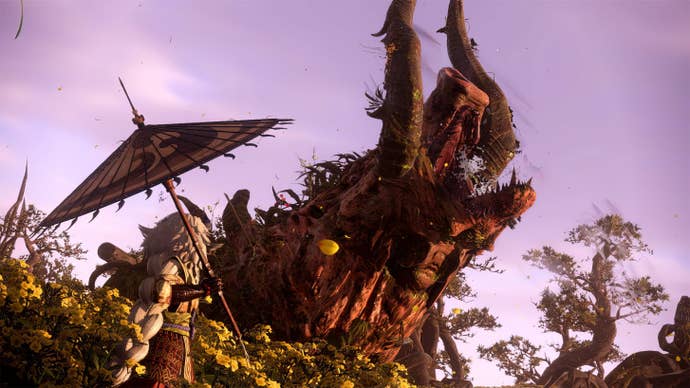
Once you clear the second proper boss of the game, the flighty and too-big-for-its-arena holy bird Amaterasu, the game really starts showing its teeth. The next two objective fights – a p**sed-off fire peacock and almost-impossible wind tiger – will mess you up in seconds. Even the best gear from the first section of the game and some juiced-up weapons will do nothing for you against this pair of bastards. So what do you need? Food.
Turns out that wind-drying about 20 portions of vegetables, then salting them, and then combining them with some fish you’ve pickled and smoked, is the key to victory. Different ingredients (and different preparation techniques) give you different buffs and resistances in the heat of battle. Smashing fistfuls of salt makes you more tempting a target to monsters, for some reason, and eating higher-quality veg allows you to soak up more punishment. Just like in real life.
Figuring out what gives you the most resistance to the peacock’s white-hot fire – and ingesting it wantonly – is, as far as I can tell, one of the most surefire ways to make sure you can live through more than one of its spiciest rage-based attacks. Swapping out armour for something more flame-retardant probably helps, too, but the full cycle of killing, harvesting, upgrading and equipping all that per fight probably takes a good five/six hours. Cooking, unlike in real life, takes far less time.
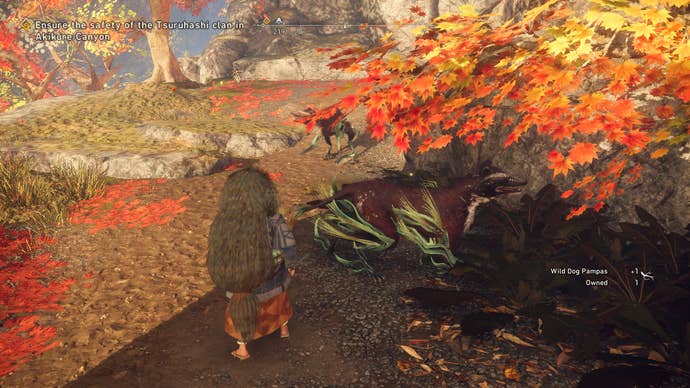
There’s something bucolic and pleasing about cycling through the game’s maps, checking in on all your various pickling jars, fishing machines, drying racks, meat smokers, and fermentation tanks, too. Making a little run of sourcing, sorting, preparing, and combining your ingredients is really engaging – a lot more so than grinding out monsters that have a habit of fleeing to the other end of the map after you hit them twice.
The food reflects one of my main frustrations with Wild Hearts: some really nice ideas – ideas new to the genre, that really work in the hunting setup – that have been diluted and drowned out by poor optimisation and implementation. It’s like going to eat your favourite meal, but having to substitute out your favourite ingredient for whatever bland, processed gunk was on special in the store that day – you’ve ordered Raclette but got served some Dairylea Dunkers. Everything seems to be there, on the plate, ready to be enjoyed… but something, somewhere, leaves a bad taste in your mouth.
Wild Hearts released on PC, PS5 and Xbox Series X/S on February 17, 2023. You can check out our Wild Hearts review at the link.
.jpg?width=690&quality=80&format=jpg&auto=webp)


